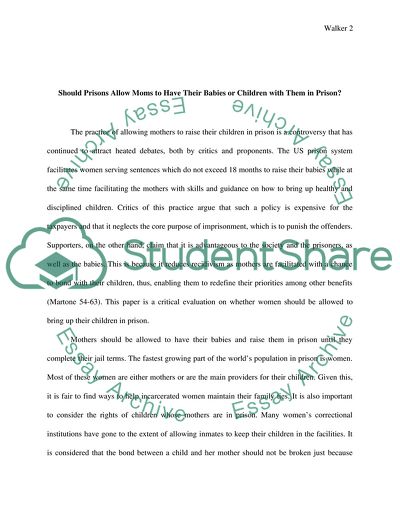Cite this document
(Should Mothers Be Allowed to Have Their Babies and Raise Them in Priso Term Paper, n.d.)
Should Mothers Be Allowed to Have Their Babies and Raise Them in Priso Term Paper. Retrieved from https://studentshare.org/social-science/1597339-controversial-essay-research-paper-topic-3-should-prisons-allow-moms-to-have-their-babies-or-children-with-them-in-jail
Should Mothers Be Allowed to Have Their Babies and Raise Them in Priso Term Paper. Retrieved from https://studentshare.org/social-science/1597339-controversial-essay-research-paper-topic-3-should-prisons-allow-moms-to-have-their-babies-or-children-with-them-in-jail
(Should Mothers Be Allowed to Have Their Babies and Raise Them in Priso Term Paper)
Should Mothers Be Allowed to Have Their Babies and Raise Them in Priso Term Paper. https://studentshare.org/social-science/1597339-controversial-essay-research-paper-topic-3-should-prisons-allow-moms-to-have-their-babies-or-children-with-them-in-jail.
Should Mothers Be Allowed to Have Their Babies and Raise Them in Priso Term Paper. https://studentshare.org/social-science/1597339-controversial-essay-research-paper-topic-3-should-prisons-allow-moms-to-have-their-babies-or-children-with-them-in-jail.
“Should Mothers Be Allowed to Have Their Babies and Raise Them in Priso Term Paper”, n.d. https://studentshare.org/social-science/1597339-controversial-essay-research-paper-topic-3-should-prisons-allow-moms-to-have-their-babies-or-children-with-them-in-jail.


